What is the meaning of kemono in Japanese? It can mean an animal as in a furry "beast;" an anthropomorphic "furry" character; or artwork featuring such characters. Typically, 獣, kemono in kanji, will have the "beast" meaning, while in katakana, kemono ケモノ, has the slang "furry" meanings.
Anime: Beastars
Anime: Flying Witch, ふらいんぐうぃっち
Anime: Aggressive Retsuko, アグレッシブ烈子 (2016)
"Beast" Translation
Literally, a kemono 獣 is a furry "beast," an animal.
It should not be confused with kimono 着物, which is a thing you wear.
The word kedamono 獣, written with the same kanji, is normally used in a bad way to refer to people who are like "animals," that is, savages, scum.
- Context: Satou Tatsuhiro 佐藤達広 clears up something for Yamazaki Kaoru 山崎薫.
- rorikon wa ningen janai... kedamono da......
ロリコンは人間じゃない・・・ケダモノだ・・・・・・
Pedophiles aren't human... [they] are animals......
What are Kemono Characters?
A kemono character is a character with beast-like features, such as having fur or scales, and they're pretty much what's called "anthro" or "furry" characters in English, but there are some things worth noting.
Receiver: Wolfgang von Kraftman ヴォルフガング・フォン・クラフトマン
Anime: Hataage! Kemono Michi 旗揚!!けものみち (Episode 8)
- Context: a fully-human man uses a cobra twist on a wolf kemono character, something that's only possible because the kemono character is human-shaped despite his canine features.
First off, we can categorize kemono characters into two directions, which we'll call:
- Demi-human: where a human gains animal features.
- Anthropomorphic: where an animal gains human features.
Half-Human Half-Animal Kemono Characters
A demi-human character occurs in your typical series where most characters are normal, they're human beings, then there's this monstrous freak of nature walking around on two feet but with a fluffy tail, sharp fangs, pointy horns, vertical pupils, and so on. These are generally called juujin 獣人, "beast-person," "beastman," "beastwoman," etc.
Anime: Flying Witch, ふらいんぐうぃっち (Episode 4, Collage)
- Context: this poor woman turned into a furry... character.
Anime: Made in Abyss, メイドインアビス (Episode 10)
- Context: animal features include subtle details like whiskers and a 3-shaped mouth.
Of course, depending on the series how the demi-human character is treated varies in-universe:
- It's a monster! Run for your lives! Or hunt it to the death!!!
- Nobody cares about the elephant-man in the room.
- Did you just call him a "freak"? That's discrimination, you racist. You're going to jail for this.
- The reverse scenario where being partially animal is normal, and it's the fully human character who is considered weird.
- Context: this kemono character is wearing nothing but an apron, but you probably didn't notice that because you thought of her not as a person like you, but as an animal, you racist. Or maybe it's just that we don't consider animal butts to be indecent.
One common way kemono characters are treated as animals is the way they refer to themselves. In My Little Pony, in English, words like "everyPONY" are used instead of "everybody." In Japanese, something similar occurs with counters.
Normally, to count a number of people, the ~nin ~人 counter is used, e.g. go-nin 五人 means "five people." When counting small animals (as opposed to heads of bovines for example), the ~hiki ~匹 counter is used instead, e.g. go-hiki 五匹, "five small animals." Sometimes you have huge monsters who count puny humans with this counter, implying they're small animals from their point of view. With kemono characters, too, sometimes they're counted with this animal counter, despite not being discriminated against, simply because it sounds funnier this way.
- Context: a furry flirts with a furry character.
- Ge, Genzou-san, souiu no wa Shigure-chan ni itte-agenasai ne?
げ 源蔵さん そういうのはシグレちゃんに言ってあげなさいね?
Ge, Genzou-san, that sort of thing [you should] say tell Shigure-chan, okay? (as in flirt with her, not me.)- itte-agenasai - nasai form of itte-ageru 言ってあげる.
- watashi ni wa shujin ga......
私には主人が・・・・・・
I [have] a husband......
- watashi ni wa {shujin ga iru}
私には主人がいる
{A husband exists} is true for me.
I have a husband.
- watashi ni wa {shujin ga iru}
- See also: plewds.
- danna-san mo koboruto darou?
旦那さんもコボルトだろう?
[Your] husband is a kobold, too, [isn't he]?- A kobold is a fantasy creature, which happens to be a furry character in this series.
- oku-san, ore nara danna-san datte {issho ni} aiseru
奥さん 俺なら旦那さんだって一緒に愛せる
[Lady], if [it]'s me, [I] can love [your] husband as well.- oku-san - used as title to refer to a "wife."
- aiseru - potential form of irregular verb aisuru 愛する, "to love."
- matte Genzou-san
まって源蔵さん
Wait, Genzou-san. - watashi ni wa {nijippiki wo koeru} kodomo datte iru no!
私には二十匹を超える子供だっているの!
I also have {more than twenty} children!- nijippiki - ni-juu 二十, "twenty," plus hiki 匹, affected by sokuonbin 促音便.
- sore ijou itte wa......!
それ以上言っては・・・・・・!
If [you] say more than that......!
- sore ijou itte wa dame
それ以上行ってはだめ
If [you] say more than that it wouldn't be good.
[You] shouldn't say more than that.
- sore ijou itte wa dame
Examples of demi-humans include various sort of humanoid monsters, some of which are humans transformed, like werewolves. Japanese games, in particular, have lots of them: lizardmen, beastmen, etc.
The fact that they are partially animal tends to mean they have some enhanced animalistic ability, which kind of makes no sense considering humans are the ultimate apex predator.
Weapon: Saikaidou Kotetsu 西海道虎鉄
Anime: Onmyou Taisenki 陰陽大戦記 (Episode 20)
- Context: Kogenta is a "white tiger," byakko 白虎, which is supposed to be a legendary creature. Here, he's holding a sword in Sunrise Stance.
In particular, "monster," katakanized monsutaa モンスター, is a Japanese term for all sorts of enemies in some games and RPGs. Consequently, some kemono characters are also considered to be monster girls, although most of them tend to be more human than furry, or scaly.
Anthropomorphic Kemono Character
Anthropomorphism is "showing or treating of animals, gods, and objects as if they are human in appearance, character, or behavior."(cambridge:anthropomorphism)
Now, it's possible that Kogenta, for example, is a god that happens to manifest as a sorta human-shaped being, which would technically be anthropomorphism, but for the purpose of this article, this isn't what we're talking about in this section.
We're talking characters that are based on animals, but drawn as people. And while scientifically speaking "humans" are animals, too, humans aren't anthropomorphized, so you end up with a series where you have all sorts of animals, EXCEPT HUMANS.
These half-animal half-human characters will go around doing stuff just like humans, in an universe where humans don't exist.
Right: Retsuko 烈子
Anime: Aggressive Retsuko, アグレッシブ烈子 (2016) (Episode 32)
The more you think about it the less it makes sense, so I advise you not to. For example, characters based on different animals come in all different shapes and sizes, but they can all speak the same language, even though their vocal chords should be extremely varied, as well.
Right: Juno ジュノ
Anime: Beastars (Episode 12)
- Context: Haru is older than Juno, she's her senpai, despite this, Juno, being based on a wolf, is far bigger than Haru, who is based on a rabbit.
Such immense flaws in the entire idea are normally ignored, as they should.
Sometimes the fact the characters are based on animals is merely a stylistic choice because the author thinks kemono designs are cuter than just having human characters or something like that, and their animalistic characteristics do not affect the story at all.
- Context: a typical morning in kemono-land.
- boku wa Raion
僕はライオン
I'm Lion. - goku futsuu no sarariiman desu
ごく普通のサラリーマンです
[Just your] very typical salaryman. - gyaa' raion kowaiii aaaaa
ギャーッライオン怖いいいあああああ
*shriek* a lion, scaryyyyyyaaahhh.
Other times, a huge chunk of the plot revolves on the differences between species.
- Context: in a world where carnivores and herbivores are people.
- mimei no shokusatsu jiken, han'nin tousouchuu
未明の喰殺事件、犯人逃走中
Early morning [devouring] incident, perpetrator on the run.- shokusatsu
喰殺
To kill by eating. To devour.
- shokusatsu
Although humans are all the same species, it's sometimes possible to draw parallels between inter-species relationships in kemono series and how humans relate in the real world.
- Beastars is a series where such parallels can be found. Ironically, racial discrimination would be the first possible analogy you can think of in a series with varied species, Beastars' carnivore-herbivore dichotomy with vast physical power differences is closer inter-gender issues.
- Herbivores (women) are depicted powerless to defend themselves against the stronger carnivores (men), whose urges incline them to attack.
- Carnivores have trouble building relationships with herbivores, who fear them generally, making attempts to appear non-threatening. They also fear false accusations, as they may be presumpted guilty.
Lack of Human Skin in Kemono Characters
Characters that feature a human face, human skin, rather than only fur, scales, or feathers covering their bodies aren't considered to be kemono characters in Japanese, or furry characters in English.
The reason for this is simply that there exists an entire kemono fandom (called kemoners), a furry fandom (called furries), and such fandoms are mainly based on characters that entirely furry, like Kogenta, or Sonic (which is Japanese, in case you forget), or western cartoons like Mickey Mouse.
As such, merely featuring some animal body part doesn't count as kemono, nor as furry.
- Context: ironically, Kemono Friends doesn't feature kemono characters.
- Context: this anthropomorphized cockroach with hair antennae isn't a kemono character, either.
This is sort of confusing specially for a western audience watching anime. For instance, it's pretty easy to make a distinction between cat girls, characters that only have "cat ears," nekomimi 猫耳, and furry characters. That's because these are well-known terms.
However, in Japan, there's also the term "monster girl," which is based on game monsters and not well-understood in the west.
This leads to a situation where many characters go way beyond merely having animal ears, but not all the way to being entirely furry, and there's no common word to refer to them.
- Context: a cat girl, not a kemono character, despite tail, paws, and cat ears, cat nose, cat mouth, and even a cat-head-shaped boob window. If the whole body isn't cat, that's not kemono.
- Context: a spider-based monster girl with more than two eyes.
Right: Hanazono Yurine 花園ゆりね
Anime: Jashin-chan Dropkick, 邪神ちゃんドロップキック (Episode 5)
- Context: a half-human half-snake snake monster girl being tortured with stone weights.
Non-Animal Anthropomorphization
In anime, there's a well-known practice of drawing everything as a cute anime girl, which you may read about in the article about gijinka 擬人化.
Right: Morganite モルガナイト
Anime: Land of the Lustrous (2017), Houseki no Kuni 宝石の国 (Episode 1, Collage)
- Context: precious gems aren't animals, they're minerals, so they don't count as kemono.
Words With a Kemo Prefix
Some words derived from kemono use an abbreviated kemo morpheme, for example:
- kemomimi
ケモミミ
"Beast ears." (nekomimi, usamimi, etc.) - kemonaa
ケモナー
"Kemoner." (wasei-eigo of kemono with "~er" English suffix katakanized.)
The term fans of kemono art use to refer to themselves. - kemofure
けもフレ
Abbreviation of Kemono Friends けものフレンズ. Note that kemo/kemono is spelled in hiragana for aesthetic reasons.
This is also used in portmanteaus for mixed categories. For example, in fiction, yuri 百合 refers to stories featuring lesbian romance, so yuri that's also kemono gets called kemo-yuri ケモ百合. Similarly: kemo-ryona ケモリョナ, kemo-loli ケモロリ, kemo-shota ケモショタ, and so on.
References
- anthropomorphism - cambridge.org, accessed 2022-07-30.
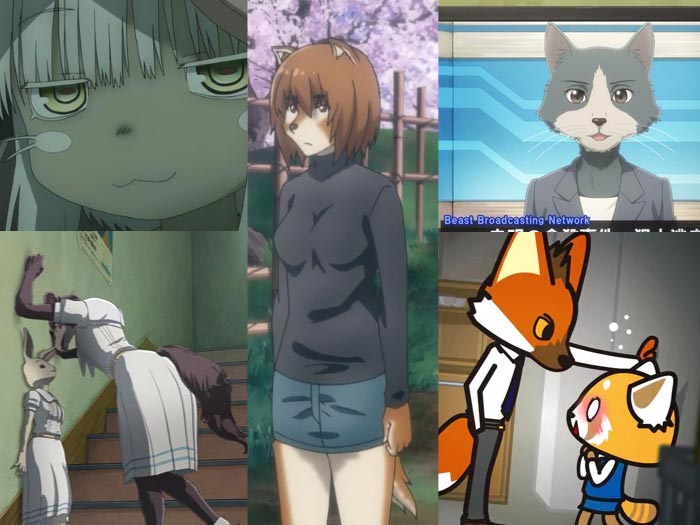
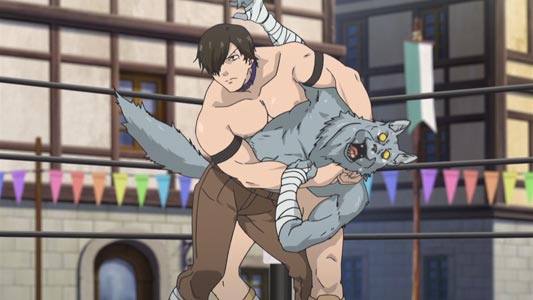
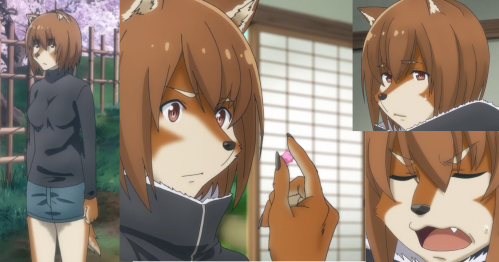
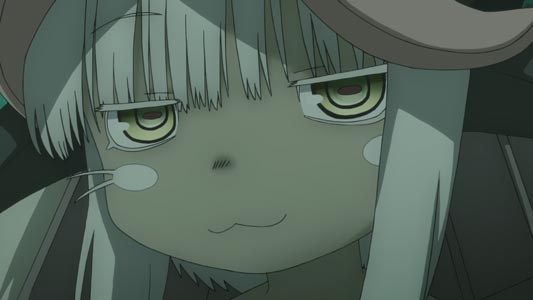
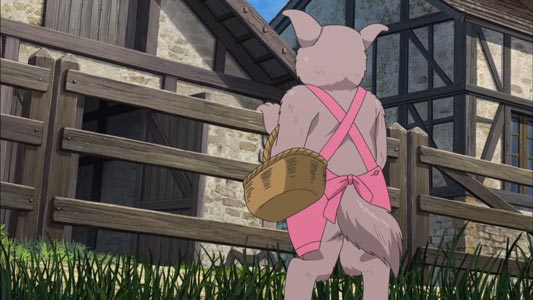
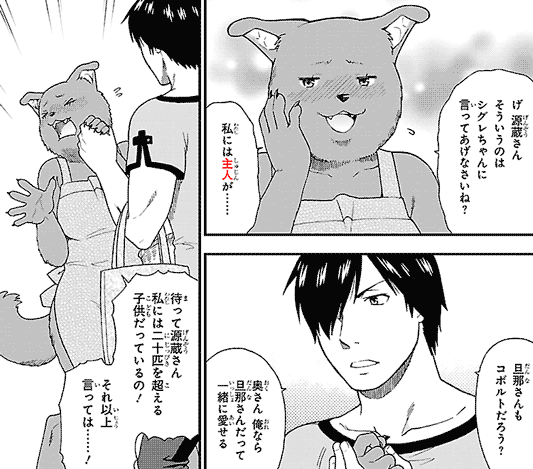
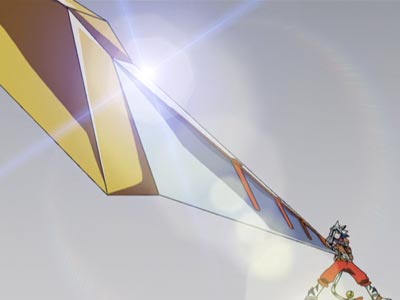
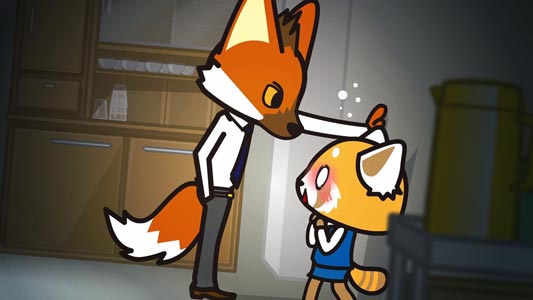
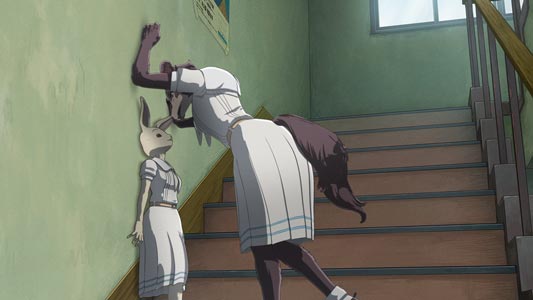
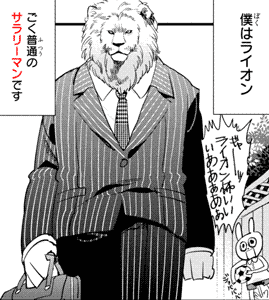

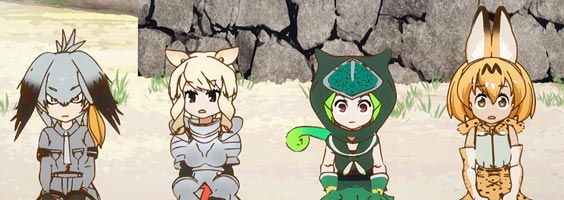

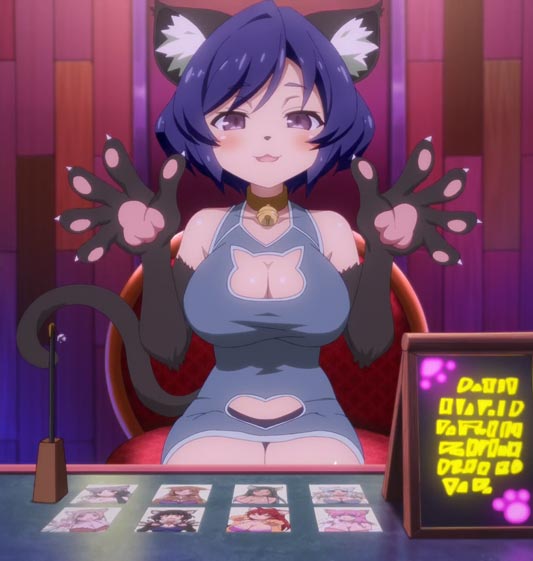
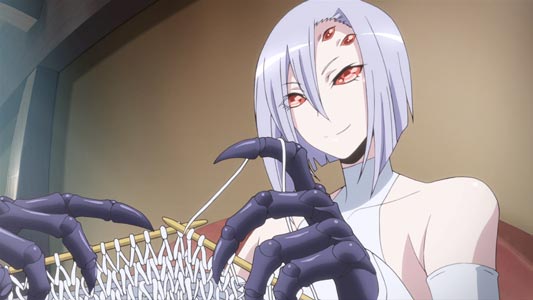
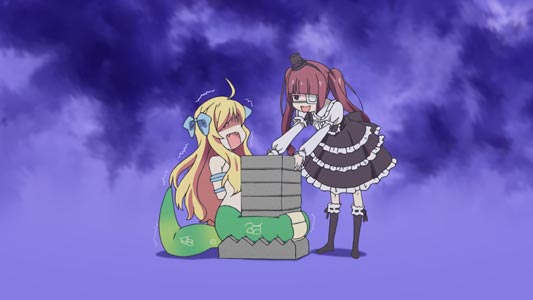
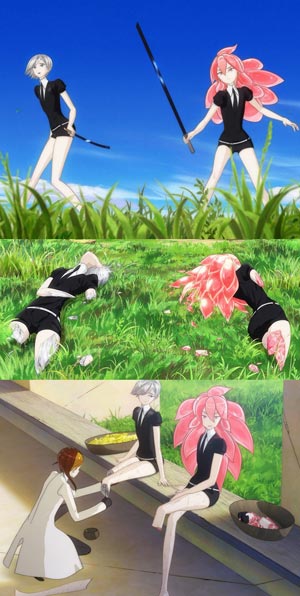
No comments: